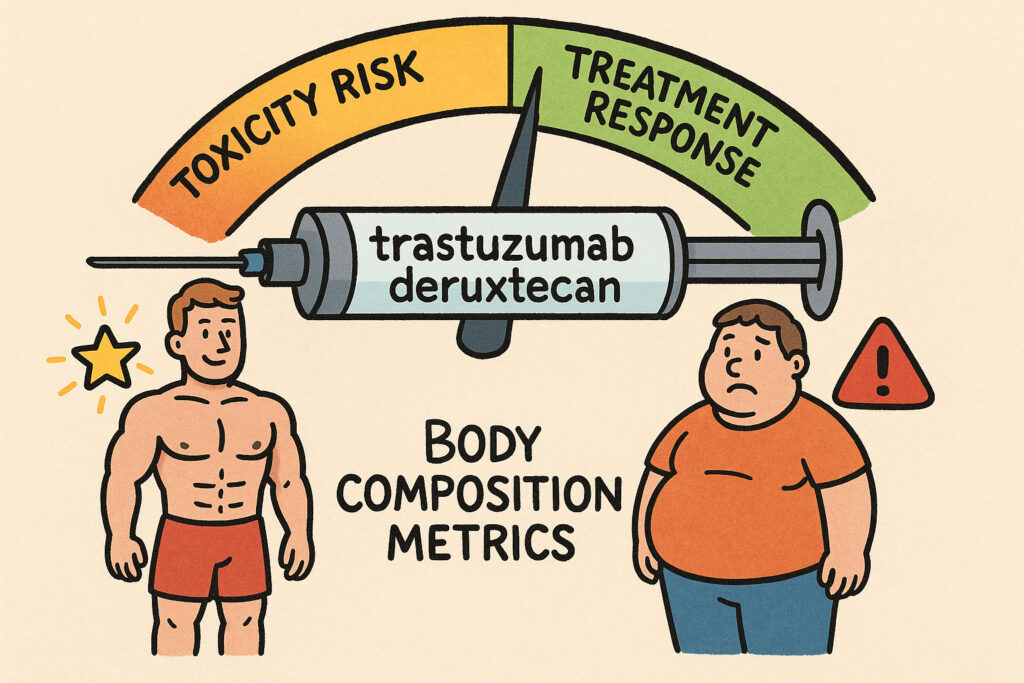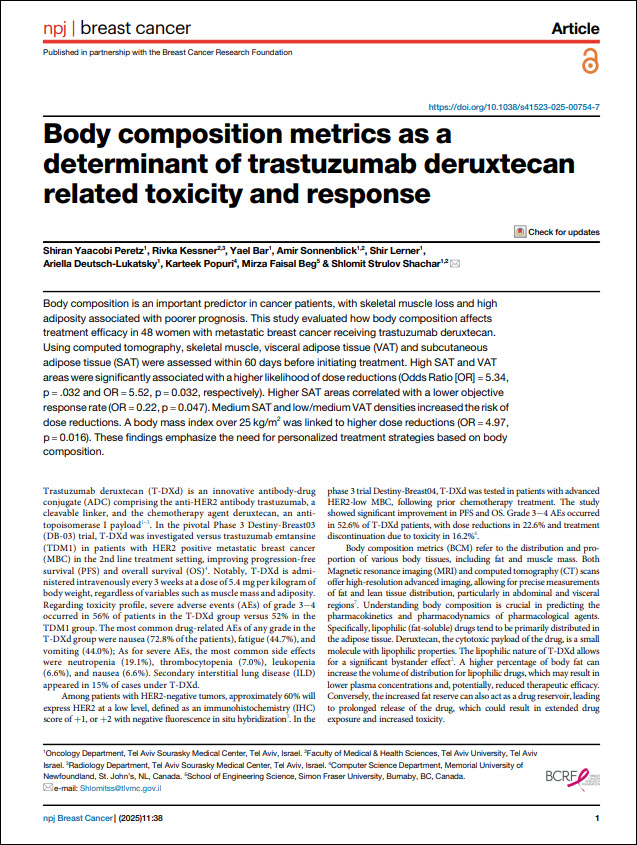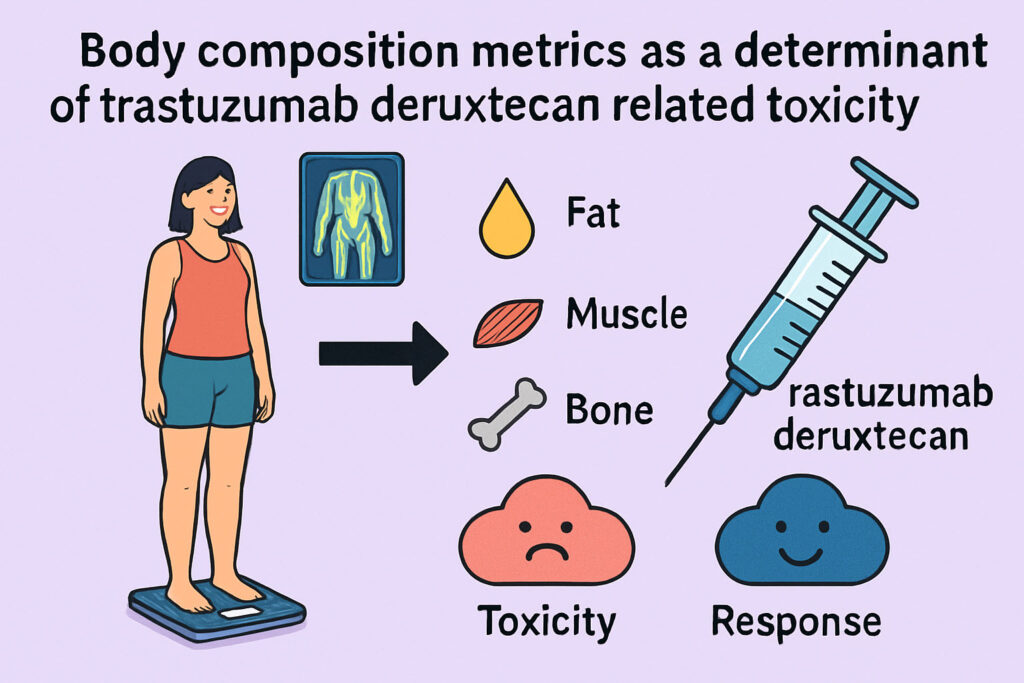
This scientific article explores the connection between a patient’s body composition and their experience with the drug trastuzumab deruxtecan (T-DXd) for metastatic breast cancer. Using computed tomography scans to measure muscle and fat tissue, the study found that higher amounts of both subcutaneous and visceral fat, as well as lower fat density and a higher body mass index (BMI), were linked to a greater need for T-DXd dose reductions due to toxicity. Specifically, high subcutaneous fat was also associated with a lower chance of a positive treatment response. These findings suggest that considering body composition metrics could lead to more individualized and potentially safer treatment plans for patients receiving this therapy.


Audio Overview
(from Google notebookLM) (16 minutes and 24 seconds)
